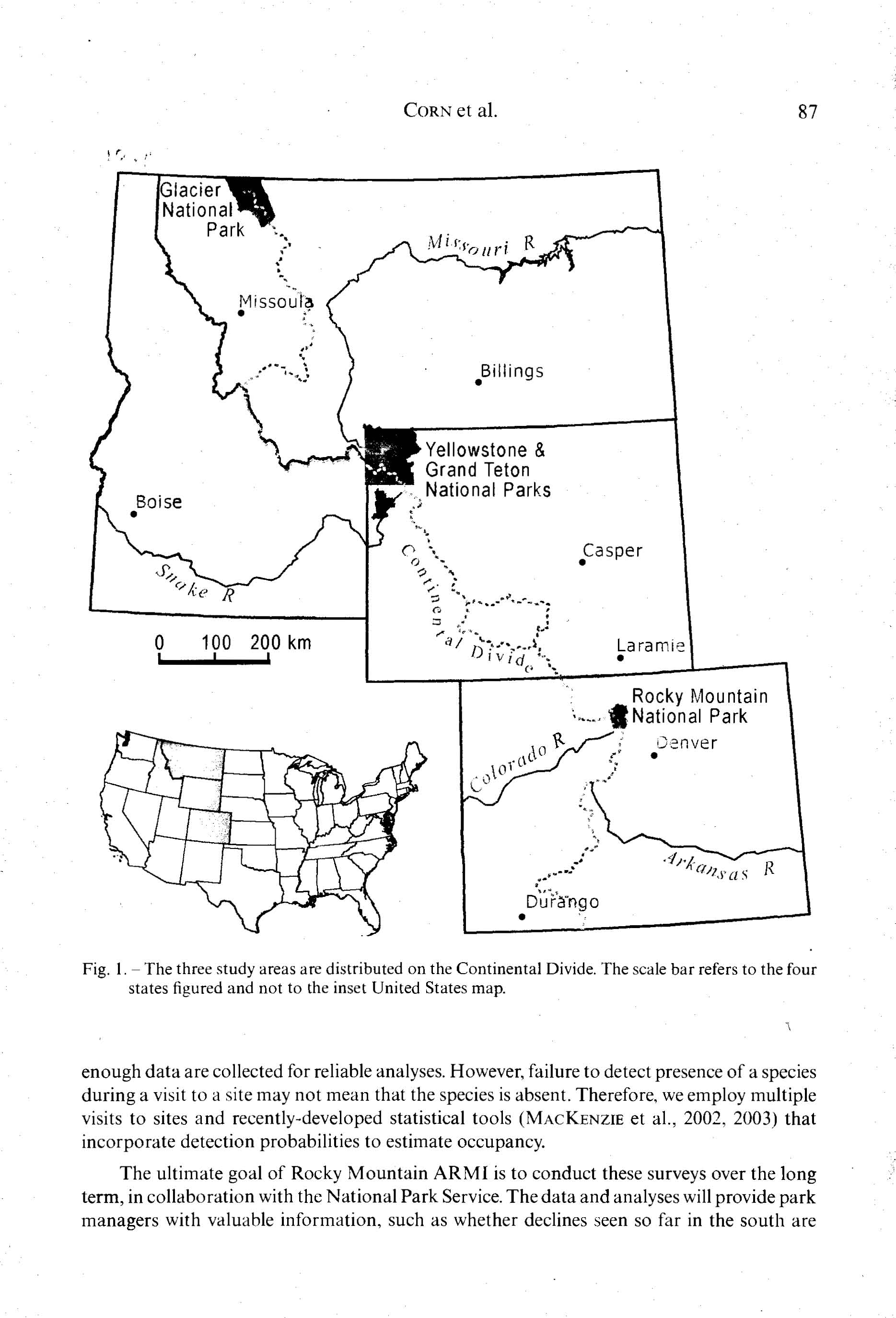Status of amphibians on the Continental Divide: surveys on a transect from Montana to Colorado, USA
http://www.fort.usgs.gov/Products/Publications/21538/21538.pdf
Abstract/Summary
The Rocky Mountain Region of the United States Geological Survey’s Amphibian Research and Monitoring Initiative is conducting monitoring of the status of amphibians on a transect that extends along the Continental Divide from Canada to Colorado and comprises four National Parks. Monitoring uses visual encounter surveys to determine site occupancy, with multiple visits to a subset of sites to estimate detection probabilities for each species. Detection probabilities were generally high (above 0.65) among species. There was a gradient in site occupancy, with most species scarce in the south and relatively common in the north. For example, Bufo boreas is close to extinction in Rocky Mountain National Park, was found at fewer than 5 % of sites in Yellowstone and Grand Teton National Parks in the middle of the transect, but occurs at approximately 10 % of sites in Glacier National Park. The salamander Ambystoma tigrinum was rare in Rocky Mountain and occurred at less than 25 % of sites at Yellowstone and Grand Teton, but A. macrodactylum occurred at more than 50 % of sites in Glacier. There are numerous differences among parks, such as latitude, climate, numbers of visitors, and human population density in the surrounding landscape. The degree to which these factors have influenced the current distribution and abundance of amphibians is unknown but should be a focus of additional research.
Publication details
| Published Date: | 2005 |
| Outlet/Publisher: | Alytes 22: 85–94 |
| Media Format: |
ARMI Organizational Units:
Rocky Mountains, Southern - BiologyRocky Mountains, Northern - Biology

